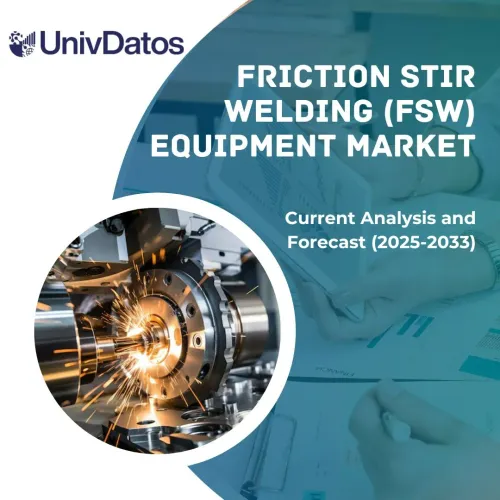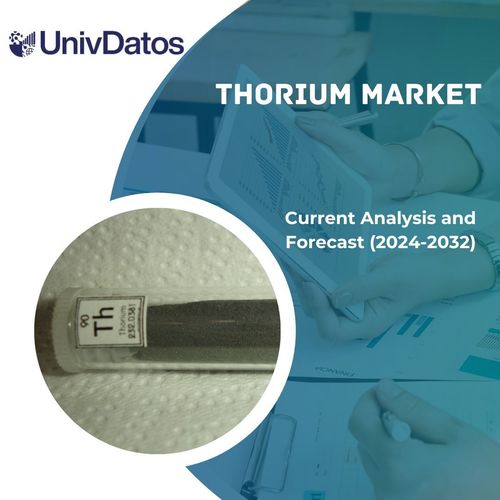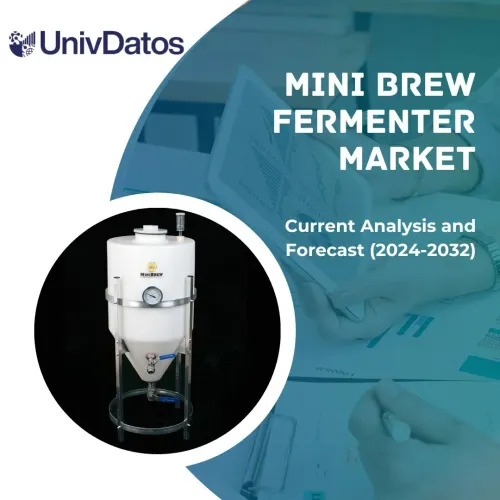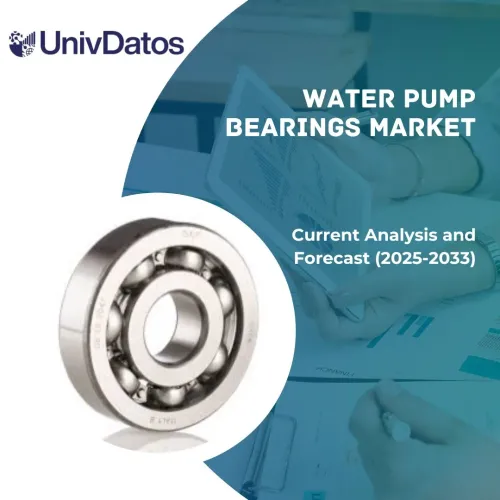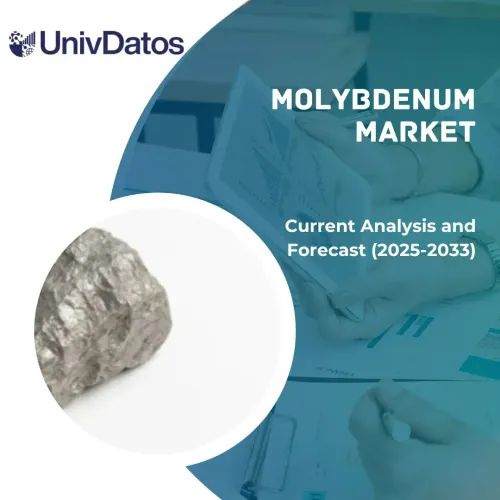- Home
- About Us
- Industry
- Services
- Reading
- Contact Us
Rutile Market: Current Analysis and Forecast (2024-2032)
Emphasis on Type (Natural and Synthetic); Application (Paints and Coatings, Plastics, Welding Electrodes, Metallurgy, Renewable Energy and Electronics, and Others); Region/Country.
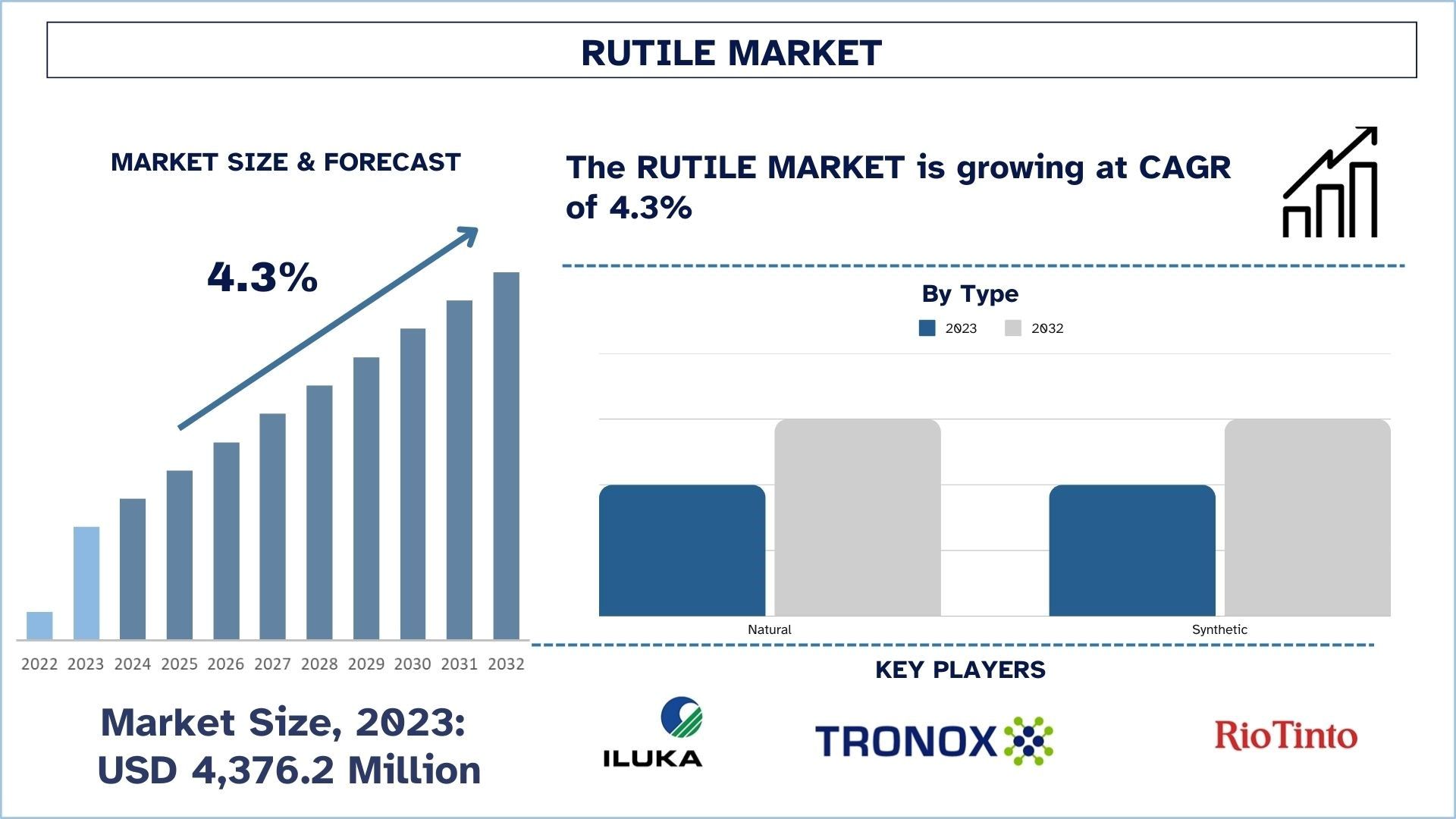
Rutile Market Size & Forecast
The Rutile market was valued at USD 4,376.2 Million in 2023 and is expected to grow at a strong CAGR of around 4.3% during the forecast period (2024-2032) owing to increasing demand for titanium dioxide (TiO₂) in paints, coatings, plastics, and renewable energy applications.
Rutile Market Analysis
The rutile market is a major part of the Titanium dioxide (TiO₂) and mineral sands industry because of its high demand in paints, coatings, plastics, and industrial applications including welding electrodes and metallurgy. Rutile, a naturally occurring mineral rich in TiO₂, has an excellent high refractive index and high stability properties that make it indispensable for high-performance products. The market, however, is driven by increasing demand for TiO₂ as a pigment, advancements in aerospace and defense materials, and rising adoption of renewable energy technologies such as photovoltaic cells. Market growth is also spurred by a shift toward synthetic rutile production largely due to diminishing natural rutile reserves, which provide a steady supply of industrial rutile.
The rutile market is sustainable and currently poised for steady growth backed by rapidly increasing demand for high-performance and sustainable materials from across different industries. Mitigation of supply constraints and environmental impact can be achieved by advances in both synthetic rutile production and recycling initiatives. The demand will also be increased by emerging applications, especially in photovoltaic cells. Besides, the growth of infrastructure projects in developing economies and the evolving situation of lightweight titanium alloy use in aerospace and defense will offer a big opportunity. In an increasingly ‘green and efficient’ world, the rutile market has a significant role to play in helping stoke the global shift toward this new norm.
Rutile Market Trends
This section discusses the key market trends that are influencing the various segments of the Rutile market as identified by our team of research experts.
Growing Demand for Titanium Dioxide (TiO₂)
Because titanium dioxide (TiO₂) is able to provide its users with great opacity, brightness, and UV resistance, the material is highly critical to industries like paints, coatings, plastics, and paper. Growing demand for TiO₂ based products in construction and automotive sectors, particularly in emerging economies, is expedited due to higher durability and aesthetic requirements. The demand for TiO₂ has further increased because of the shift towards eco-friendly coating and energy-efficient coating which has added fuel to the rutile market because of the use of TiO₂ as a major feedstock of TiO₂ production.
Scarcity of High-Grade Natural Rutile
However, high-grade natural rutile reserves have become a scarce market driver which has brought into focus the demand for alternatives. The result of this scarcity has been increased titanium dioxide demand met because of synthetic rutile, and inorganic rutile derived from upgrading ilmenite to meet the growing demand for titanium dioxide. Natural rutile is becoming harder to source, synthetic rutile is offering them a functional and scalable alternative for TiO₂ production and industrial applications.
Expansion of Construction and Automotive Industries
This demand for high-quality paints, coatings, and plastics has been spurred on by the rapid growth of the construction and automotive industries worldwide which heavily depend on titanium dioxide. The demand for rutile as the critical feedstock is rising due to infrastructure development, urbanization, and the exponential rate of automobile production in the Asia Pacific and North America. This strengthens the need for durable performance materials in these industries, making rutile also important in improving the properties of coatings and plastics.
Advancements in Renewable Energy
Rutile has seen growing demand due to the increased use of renewable technologies such as photovoltaic cells. Its high refractive index and UV stability make it an important component in solar panel coatings and energy storage systems. Rutile’s expanding applications in advanced materials and energy solutions, combined with countries’ investments in renewables to protect sustainability goals, will be the strongest driver for the rise of renewables in the energy supply mix.
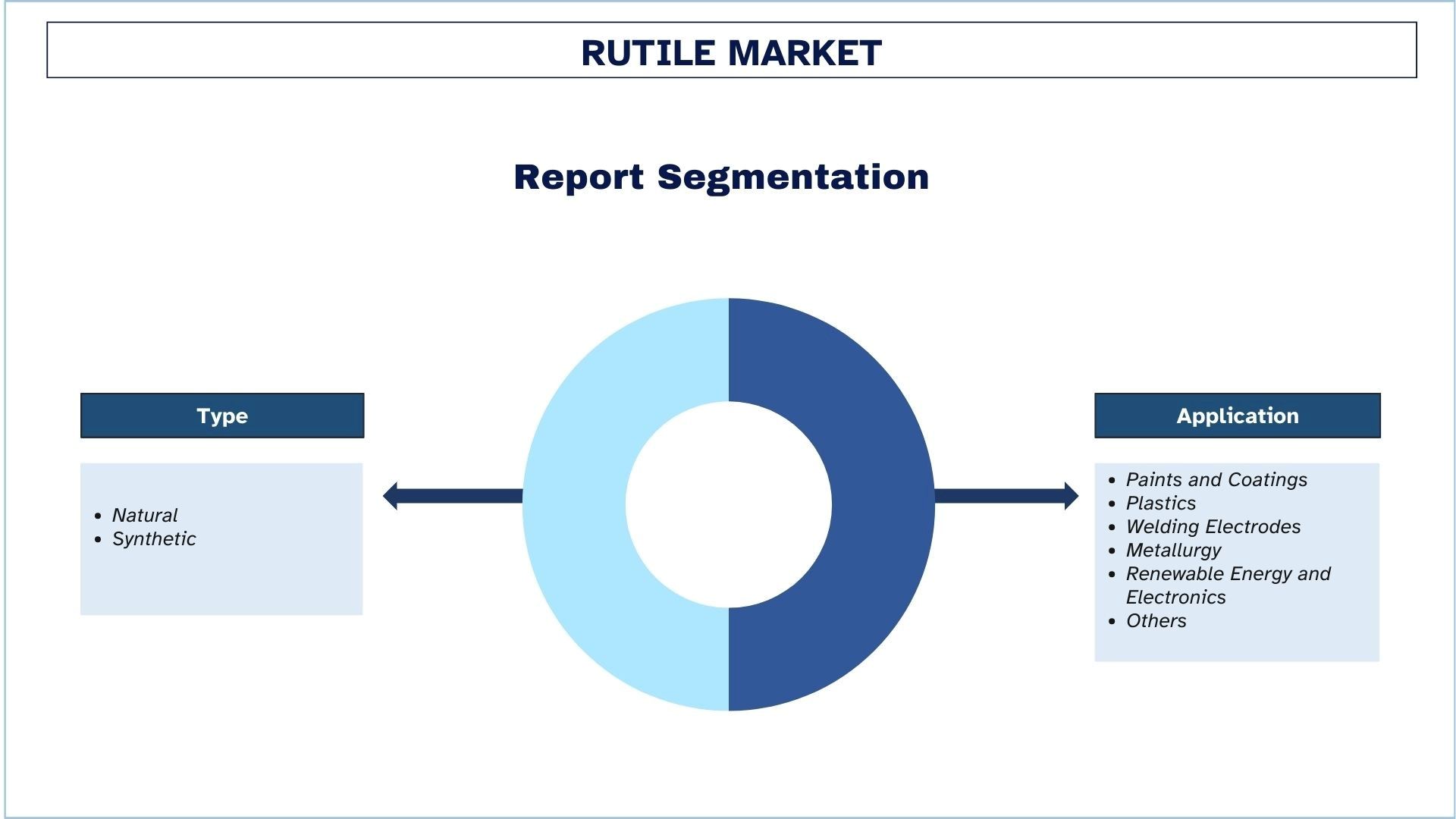
APAC is Expected to Grow with Significant CAGR During Forecast Period
The robust industrialization and urbanization, along with the growth in demand for titanium dioxide (TiO₂) in paints, coatings, plastics, and paper are causing the Asia-Pacific (APAC) region to outstrip the world's market for rutile. In the APAC, rutile is consumed primarily by China and India being the consumers majorly due to their booming construction, automotive, and infrastructure sectors. Solar energy installations are also driving demand for rutile, an essential element to make photovoltaic cells. Also, countries with natural rutile reserves reserve, such as Australia, are long-standing significant producers in the global supply chain.
The scarcity of high-grade natural rutile and a growing trend toward synthetic rutile production, are driving surges in APAC. The fast market growth is supported by technological development in ilmenite upgrading processes and by government support to mine sustainably. In addition, rising investments in aerospace and defense of advanced materials along with the escalated demand for lightweight titanium alloys contribute positively to market growth. Well-developed with good policies, a growing middle class, and a concentration on infrastructure development, APAC is likely to continue its role as the leading rutile region globally.
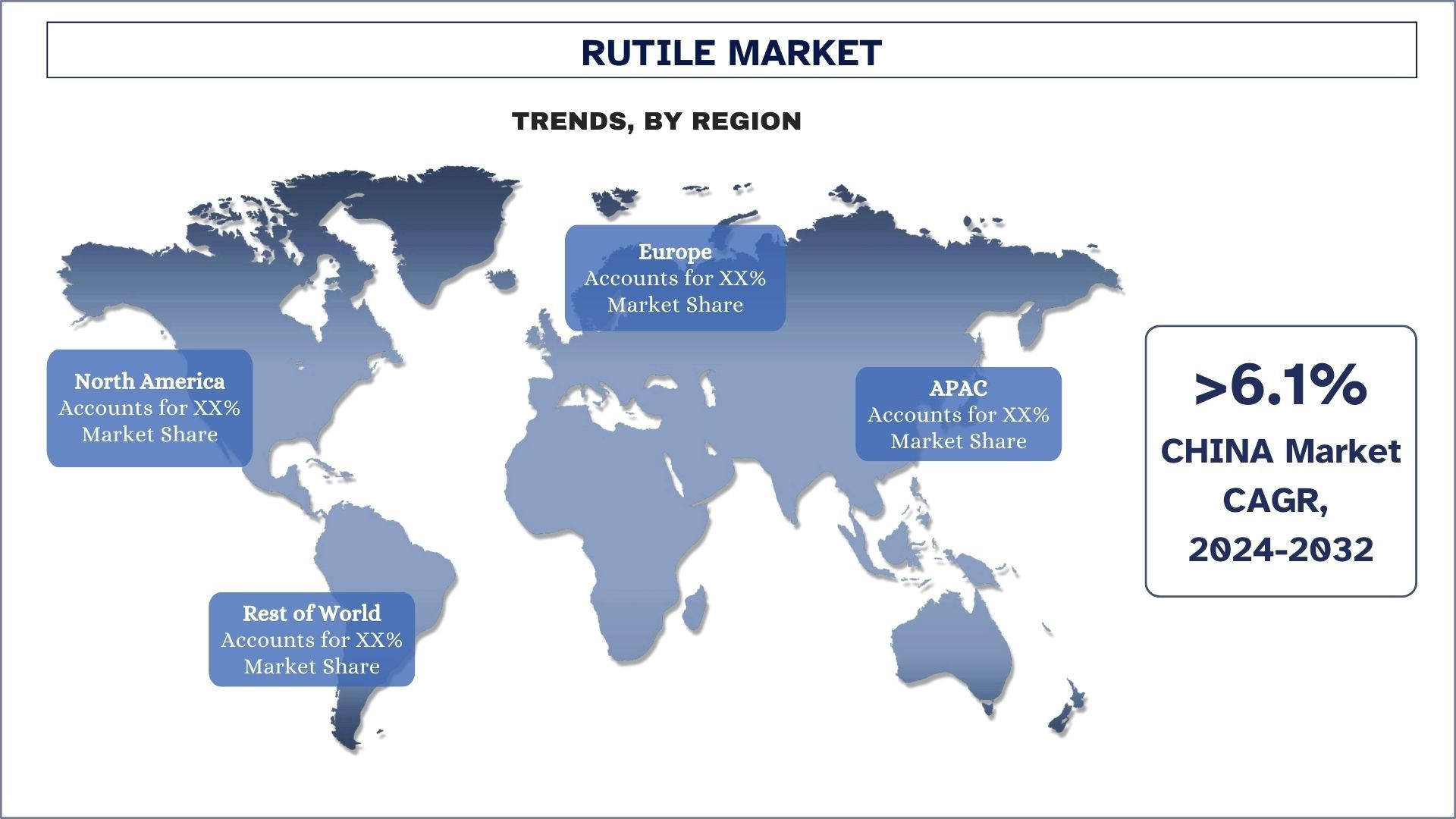
Rutile Industry Overview
The Rutile market is competitive and fragmented, with the presence of several global and international market players. The key players are adopting different growth strategies to enhance their market presence, such as partnerships, agreements, collaborations, new product launches, geographical expansions, and mergers and acquisitions. Some of the major players operating in the market include Iluka Resources Limited, Tronox Holdings PLC, Rio Tinto, East Minerals, IREL (India) Limited, V.V. Mineral, TOR Minerals, Kerala Minerals & Metals Ltd (KMML), Yucheng Jinhe Industrial Co., Ltd., and Base Resources Limited.
Rutile Market News
In September 2024, Leonoil Company Limited has successfully acquired over 90% of Sierra Rutile Holdings Limited and is now moving forward with the compulsory acquisition of the remaining shares.
Rutile Market Report Coverage
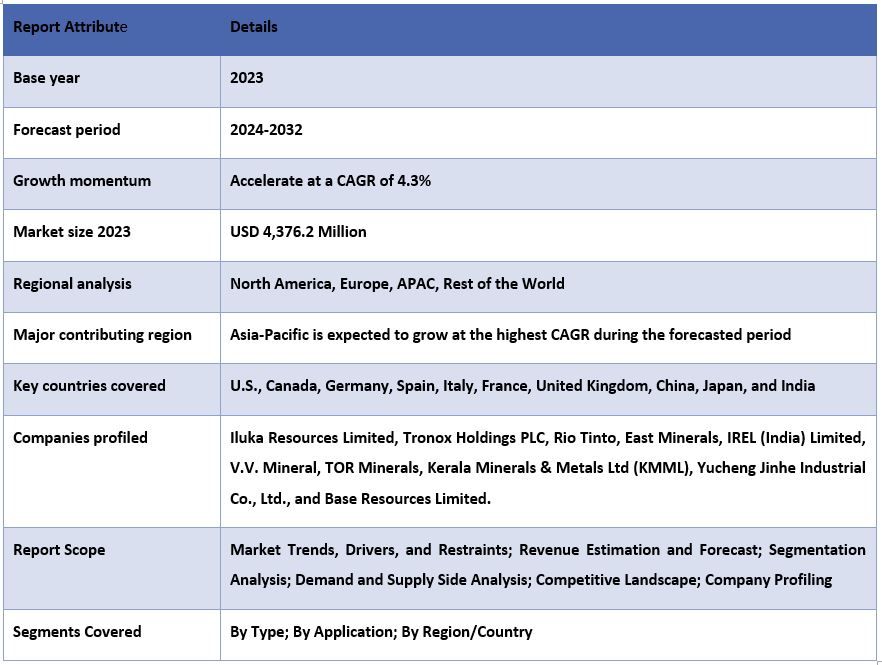
Reasons to buy this report:
The study includes market sizing and forecasting analysis validated by authenticated key industry experts.
The report presents a quick review of overall industry performance at one glance.
The report covers an in-depth analysis of prominent industry peers with a primary focus on key business financials, product portfolios, expansion strategies, and recent developments.
Detailed examination of drivers, restraints, key trends, and opportunities prevailing in the industry.
The study comprehensively covers the market across different segments.
Deep dive regional level analysis of the industry.
Customization Options:
The global Rutile market can further be customized as per the requirement or any other market segment. Besides this, UMI understands that you may have your own business needs, hence feel free to contact us to get a report that completely suits your requirements.
Table of Content
Research Methodology for the Rutile Market Analysis (2024-2032)
Analyzing the historical market, estimating the current market, and forecasting the future market of global Rutile were the three major steps undertaken to create and explore the adoption of Rutile in major regions globally. Exhaustive secondary research was conducted to collect the historical market numbers and estimate the current market size. Secondly, numerous findings and assumptions were taken into consideration to validate these insights. Moreover, exhaustive primary interviews were also conducted with industry experts across the value chain of the global Rutile market. Post assumption and validation of market numbers through primary interviews, we employed a top-down/bottom-up approach to forecasting the complete market size. Thereafter, market breakdown and data triangulation methods were adopted to estimate and analyze the market size of segments and sub-segments of the industry. Detailed methodology is explained below:
Analysis of Historical Market Size
Step 1: In-Depth Study of Secondary Sources:
Detail secondary study was conducted to obtain the historical market size of Rutile through company internal sources such as annual reports & financial statements, performance presentations, press releases, etc., and external sources including journals, news & articles, government publications, competitor publications, sector reports, third-party database, and other credible publications.
Step 2: Market Segmentation:
After obtaining the historical market size of Rutile, we conducted a detailed secondary analysis to gather historical market insights and share for different segments and sub-segments for major regions. Major segments are included in the report, such as Type and Application. Further country-level analyses were conducted to evaluate the overall adoption of testing models in that region.
Step 3: Factor Analysis:
After acquiring the historical market size of different segments and sub-segments, we conducted a detailed factor analysis to estimate the current market size of Rutile. Further, we conducted factor analysis using dependent and independent variables such as Type and Application of Rutile market. A thorough analysis was conducted of demand and supply-side scenarios considering top partnerships, mergers and acquisitions, business expansion, and product launches in the Rutile sector across the globe.
Current Market Size Estimate & Forecast
Current Market Sizing: Based on actionable insights from the above 3 steps, we arrived at the current market size, key players in the global Rutile market, and market shares of the segments. All the required percentage shares split, and market breakdowns were determined using the above-mentioned secondary approach and were verified through primary interviews.
Estimation & Forecasting: For market estimation and forecast, weights were assigned to different factors including drivers & trends, restraints, and opportunities available for the stakeholders. After analyzing these factors, relevant forecasting techniques i.e., the top-down/bottom-up approach were applied to arrive at the market forecast for 2032 for different segments and sub-segments across the major markets globally. The research methodology adopted to estimate the market size encompasses:
The industry’s market size, in terms of revenue (USD) and the adoption rate of the Rutile across the major markets domestically
All percentage shares, splits, and breakdowns of market segments and sub-segments
Key players in the global Rutile market in terms of products offered. Also, the growth strategies adopted by these players to compete in the fast-growing market
Market Size and Share Validation
Primary Research: In-depth interviews were conducted with the Key Opinion Leaders (KOLs) including Top Level Executives (CXO/VPs, Sales Head, Marketing Head, Operational Head, Regional Head, Country Head, etc.) across major regions. Primary research findings were then summarized, and statistical analysis was performed to prove the stated hypothesis. Inputs from primary research were consolidated with secondary findings, hence turning information into actionable insights.
Split of Primary Participants in Different Regions
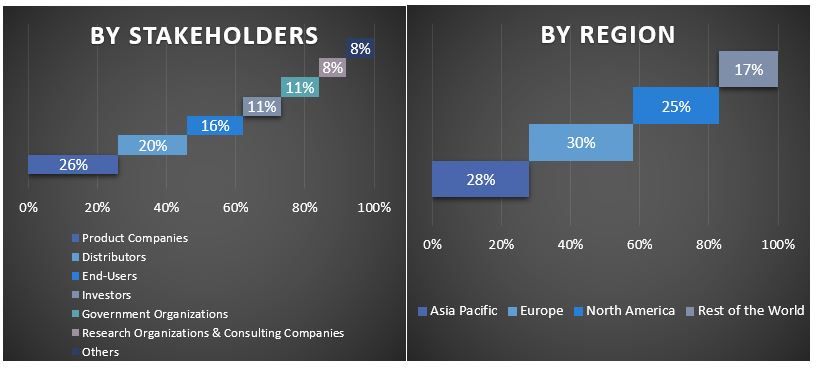
Market Engineering
The data triangulation technique was employed to complete the overall market estimation and to arrive at precise statistical numbers for each segment and sub-segment of the global Rutile market. Data was split into several segments & sub-segments post studying various parameters and trends in the areas of Type and Application in the global Rutile market.
The main objective of the Global Rutile Market Study
The current & future market trends of the global Rutile market were pinpointed in the study. Investors can gain strategic insights to base their discretion for investments on the qualitative and quantitative analysis performed in the study. Current and future market trends determined the overall attractiveness of the market at a regional level, providing a platform for the industrial participant to exploit the untapped market to benefit from a first-mover advantage. Other quantitative goals of the studies include:
Analyze the current and forecast market size of Rutile industry in terms of value (USD). Also, analyze the current and forecast market size of different segments and sub-segments
Segments in the study include areas of Type and Application
Define and analysis of the regulatory framework for the Rutile industry
Analyze the value chain involved with the presence of various intermediaries, along with analyzing customer and competitor behaviors of the industry
Analyze the current and forecast market size of the Rutile market for the major region
Major countries of regions studied in the report include Asia Pacific, Europe, North America, and the Rest of the World
Company profiles of the Rutile market and the growth strategies adopted by the market players to sustain in the fast-growing market
Deep dive regional level analysis of the industry
Frequently Asked Questions FAQs
Q1: What is the current market size and growth potential of the Rutile market?
The Rutile Market was valued at USD 4,376.2 Million in 2023 and is expected to grow at a strong CAGR of around 4.3% during the forecast period (2024-2032).
Q2: What are the driving factors for the growth of the Rutile market?
The growth of the rutile market is driven by rising demand for titanium dioxide (TiO₂) in paints, coatings, and plastics, along with advancements in renewable energy and aerospace applications.
Q3: Which segment has the largest share in the Rutile market by Type?
The Synthetic segment has the largest share of the Rutile market by Type.
Q4: What are the emerging technologies and trends in the Rutile market?
Emerging technologies and trends in the rutile market include advancements in synthetic rutile production, recycling of titanium dioxide, and increasing adoption in renewable energy and 3D printing applications.
Q5: Which region will dominate in the Rutile market?
APAC is expected to dominate the market during the forecast period.
Related Reports
Customers who bought this item also bought

